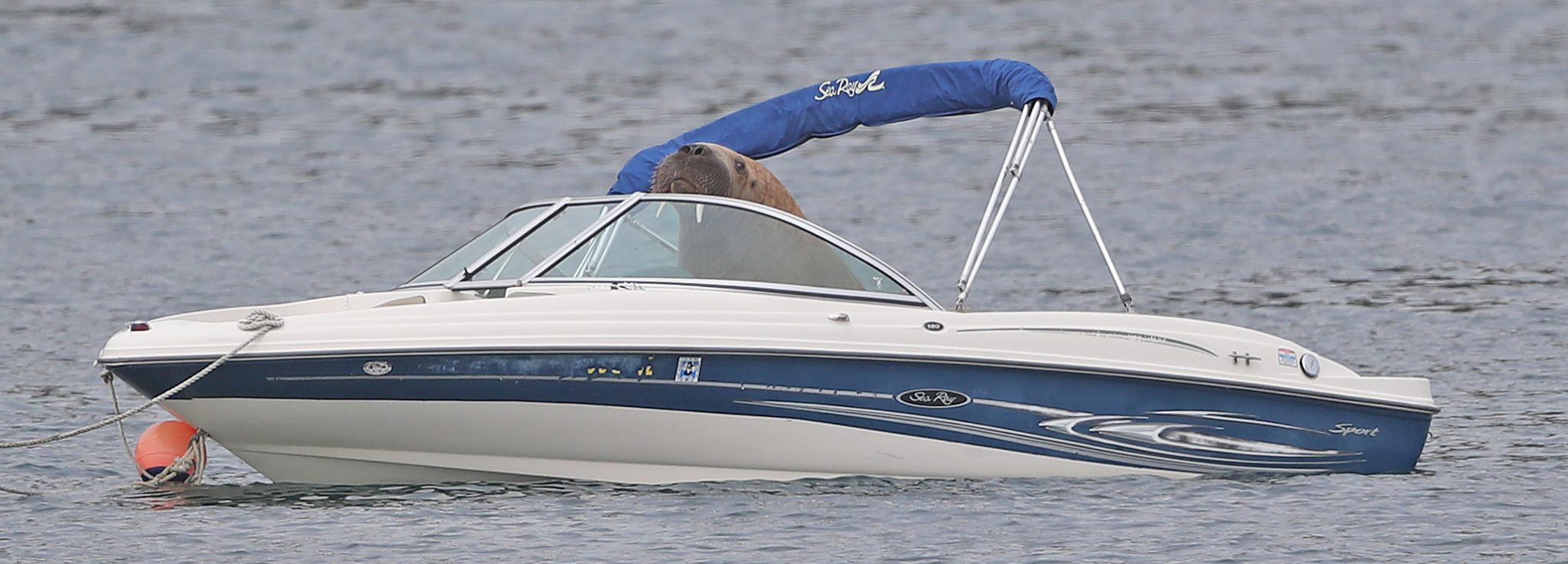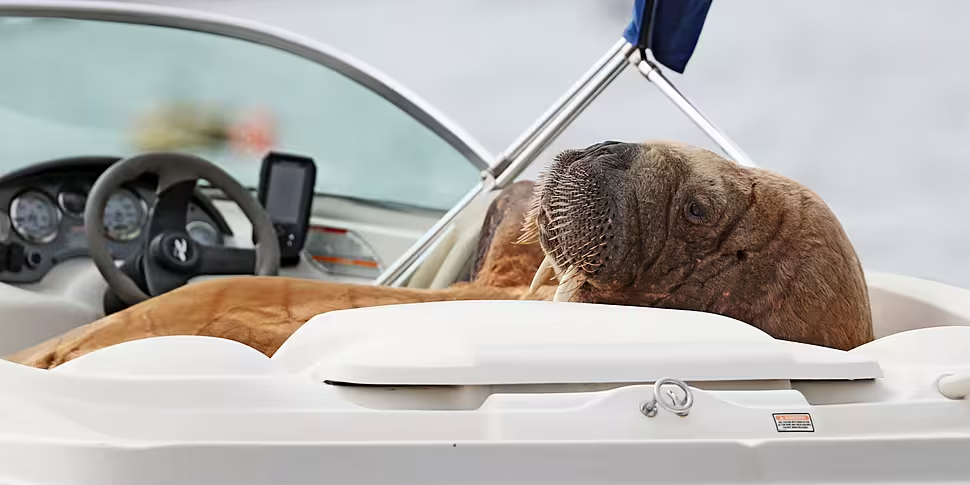Animal welfare activists are calling for Irish wildlife protections to be extended to cover ‘vagrant’ visitors like Wally the Walrus.
Wally appears to be on his way back to Arctic waters after he was spotted in Iceland – more than 900km from Irish shores.
In a tweet last night, Seal Rescue Ireland confirmed the sighting noting that they are “absolutely over the moon that he’s not only still alive and well but he is well on his way home to the Arctic.”
#WalrusWatch UPDATE: After 22 days with no confirmed sightings, we were starting to lose hope of ever seeing the young, wandering walrus again. HOWEVER, we just received notice that a similar-looking walrus was sighted yesterday in ICELAND..
Picture: Hafrún Eiríks / Höfn 1/7 pic.twitter.com/ZQLwGtbVol— Seal Rescue Ireland (@seal_rescue) September 20, 2021
On The Pat Kenny Show this morning, Seal Rescue Ireland Executive Director Melanie Croce said Wally’s Irish tour highlights the need for legal protections to be extended to non-native species.
She said Seal Rescue Ireland is supporting an ORCA Ireland petition calling for all pinnipeds (seals, walruses and sealions) in Irish waters to be protected under the 1976 Wildlife Act – which currently only protects our native grey and common seals.
“We are joining voices to really promote awareness on this issue,” she said. “We do have our protected native species, but we feel that a lot more can be done to protect them from disturbance and intentional harm and that should carry over to non-native pinnipeds as well.”
it has been confirmed that THIS IS WALLY! Notice the similar scars on the front of both front flippers. We are absolutely over the moon that he's not only still alive and well, but he is well on his way home to the Arctic
Picture: Hafrún Eiríks / Höfn (instagram @motamyndir) 3/7 pic.twitter.com/yK91CJJEiH— Seal Rescue Ireland (@seal_rescue) September 20, 2021
Ms Croce said climate change is likely to see more vagrant populations arriving in Ireland.
She said pinnipeds spend half their life on land resting, moulting and feeding their young and warned that if they can’t find safe spaces it “really, really threatens their ability to survive.”
“There was a lot of enthusiasm and excitement surrounding the walrus here and rightly so,” she said. “It was very, very strange to have him here and there is no doubt he was a very charismatic, almost comedic character.
“I can understand the curiosity, but we have to understand that these animals are fighting for survival and your curiosity can’t take precedence over the respect and welfare of a wild animal.
“So, we’re urging people to please keep their distance, observe quietly from at least 100 metres, keep dogs on a lead and, if you’re on a boat, cut your engine while you are passing and just give them lots of space.
“From what we saw, most people did that, but it only takes a handful of people to behave irresponsibly and approach the animal.”
 Wally the walrus sits in a boat in Crookhaven, County Cork, 04-08-2021. Image: Niall Carson/PA Wire/PA Images
Wally the walrus sits in a boat in Crookhaven, County Cork, 04-08-2021. Image: Niall Carson/PA Wire/PA ImagesShe said there are only 8,000 to 10,000 grey seals left in Ireland alongside less than 3,000 or 4,000 commons seals.
“Even our native seals are constantly facing disturbance from people on our shorelines – whether it is jet skis or boats or just people on the beach that are approaching them or harassing them,” she said.
“It is just that it usually doesn’t get as much media focus as the walrus did.
“So, this was actually a great opportunity to highlight the issues that our native species are facing day in, day out and really put a spotlight on the fact that this is just really something we need to stop.
“We need to put the survival and welfare of the animals first because there is just so much stacked against them.”









